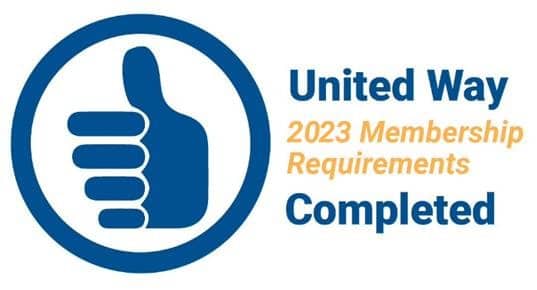LGBTQ+ SOCIAL JUSTICE JOURNEY DAY 1: IDENTITY - What's In a Name

The purpose of the first day of the LGBTQ+ 5-Day Social Justice Journey is to familiarize you with some of the definitions, terms, and language surrounding the LGBTQ+ community. Today’s materials will be a great resource as you work your way through the journey.
Please note that we will not be able to cover everything related to the LGBTQ+ community.
What is LGBTQ+?
LGBTQ+ stands for Lesbian, Gay, Bisexual, Transgender, Queer, or Questioning. The “plus” is a catch-all that includes other identities such as non-binary, asexual, pansexual, and others (we will learn about some of these identities later). All of these terms are used to represent the diversity of sexual orientations and gender identities that exist in the world. Different acronyms can be used to refer to the community, such as LGBT, or LGBTQIA. You may encounter different acronyms in different spaces. None of them are wrong! All of these acronyms are used to describe individuals who are not straight and/or not cisgender. However, it is important to respect the acronym that is being used in a given space.
For this challenge, we will use LGBTQ+, although you may encounter different acronyms in some of the materials.
For much of history, our culture and society have recognized and supported only one sexuality and gender identity; “heterosexual” (straight) and “cisgender” respectively (cisgender means a person’s gender identity matches the sex they were assigned at birth). Heterosexual and cisgender have been, and are still viewed by society as the “normal”, or “expected” identities. These identities are what much of our society is based upon. This leads to various marginalizing experiences for those who don’t fall within those categories.
Gender, Sex, and Sexuality
As you progress through this challenge, it is important to note the differences between gender identity, gender expression, sex, and sexuality. The quick definition of each is: sex is about your bodily anatomy and genetics, gender identity is about whom you feel yourself to be, gender expression is how you express your gender identity outwardly, and sexuality is about whom you are attracted to sexually and/or romantically.
Sex assigned at birth (SAAB), has long been the way we attribute and assume the gender identity of someone. For many years, it was understood that, chromosomally, only XX (Female), or XY (Male) existed among the human species; however, there have since been many more variations of sex discovered, meaning there exists more than a sex binary within the human species.
The folks who fall outside of the previously understood XX/XY binary are often referred to as “Intersex,” and can inwardly/outwardly present in a variety of different masculine/feminine ways, both biologically and how they may identify or express their gender. It is believed that upwards of one to two percent of the human population may be Intersex, or neither male nor female. A common way to think about this is; there are as many Intersex people in the world as people with red hair. This is important as we begin to understand the complexity and true spectrum of sex, gender, and attraction.
Gender, unlike sex, is a social construct. As the World Health Organization (WHO) explains:
“Gender refers to the socially constructed characteristics of women and men, such as norms, roles, and relationships of and between groups of women and men. It varies from society to society and can be changed.” In the United States, gender has historically been defined as a binary. Many other cultures have third genders or do not recognize a binary that matches the American understanding.
Many in our society make assumptions about gender. An individual’s hair, what someone is wearing, how they may express masculine or feminine mannerisms, and depth of vocal range are a few examples of how someone can express gender and/or be categorized by others (whether correctly or incorrectly). Conversationally, we use a person’s pronouns more often than their names. It is important not to make assumptions about someone’s gender or sex. Using correct pronouns is not only important to respect individuals but also to create a more inclusive environment.
They/Them Pronouns
If gender-neutral pronouns confuse or even intimidate you, that’s ok! But it is important to learn about them. Gender-neutral pronouns are commonly used by those who identify as non-binary, although they can be used by others in the LGBTQ+ community. These pronouns are singular. The Oxford Dictionary, Merriam-Webster, Dictionary.com, and even the Associated Press Stylebook all agree. This is a great place to get started if you want to learn more about they/them pronouns. This article gives tips on how to better respect gender-neutral pronouns in the workplace (and beyond). In the below Read section, you can learn more about different terms and identities used in the LGBTQ+ community.
READ
A Guide to Understanding Gender Identity and Pronouns, National Public Radio (June 2, 2021). (15- minutes)
How bisexuality plays into the LGBTQIA+ community, Los Angeles Times (March 13, 2021). (6-minutes)
9 questions about gender identity and being transgender you were too embarrassed to ask, Vox, (February 22, 2017). (23-minutes)
WATCH
Why Gender Pronouns Matter, Seventeen (July 5, 2017). (4-minutes)
Sex and Gender Identity: What it Means to Be Intersex, Nonbinary, USA Today (May 26, 2021). (2-minutes)
Sharing your Pronouns (3-minutes)
PRACTICE
- Practice saying LGBTQ, LGBTQ+, or other variations of the acronyms you might encounter.
- The LGBTQ+ acronym or other variations can seem long. Some people have ridiculed the acronym, but remember that the acronym is used, in its most basic way, to describe a growing population of individuals who are not straight and/or cisgender.
- Practice reducing the use of terms like “hey guys,” or “hello ladies.” Replace it with something like “welcome everyone,” or “good morning team.” How To Use Gender-Neutral Language and Why It’s Important
- Practice other inclusive phrases like significant other, or partner.
REFLECT
Why do gender pronouns matter?
How can practicing and applying these terms, both in your professional or personal life, create more positive and affirming interactions for LGBTQ+ folk?
How can referring to a group or individual in a different way than they want, invalidate and dehumanize them?
How can bias, discrimination, and even violence become easier to overlook when an individual’s identity, isn’t respected?
336 Central Park Avenue
White Plains, NY 10606
914.997.6700
Privacy Policy
Board Portal
Career Opportunities

